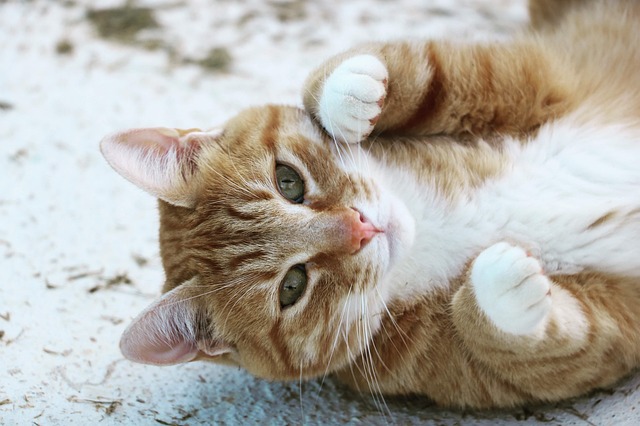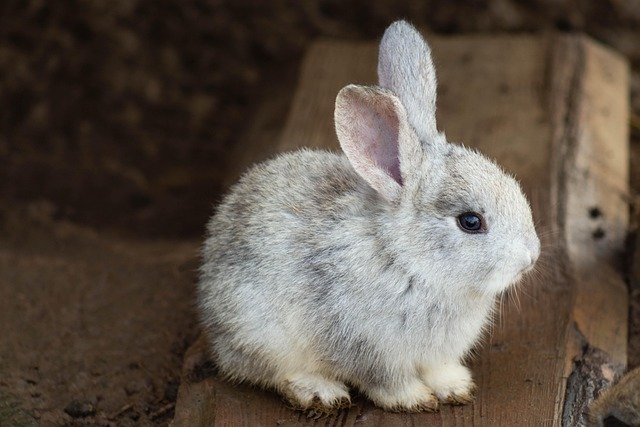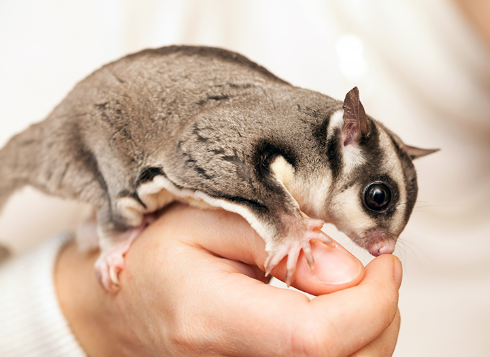Why do cats have soft fur behind their ears? Why Do Cats Have That Heavenly Soft Fur Behind Their Ears?
Why do cats have soft fur behind their ears?
Ah, the velvety touch of a cat's ear. It's like sinking your fingers into a cloud of pure softness, a sensation so irresistible that many of us cat lovers can't help but indulge in a good ear scratch (when our feline overlords allow it, of course). But have you ever wondered why this specific spot is so incredibly soft? Buckle up, cat enthusiasts, because we're about to dive into the science (and cuteness) behind this furry phenomenon.
The Science Behind the Softness
The fur behind a cat's ears, technically called the "postauricular region," is different from the fur on the rest of their body in a few key ways. First, it's denser, meaning there are more hair follicles packed into a smaller area. This increased density creates a thicker, plusher layer of fur. Second, the hairs themselves are finer and shorter than the guard hairs found on the rest of the body. This finer texture contributes to the incredibly soft feel we all know and love.
But why did nature equip our feline friends with these velvety ear****s? There are a few prevailing theories:
Theory 1: Enhanced Hearing
One possibility is that the soft fur helps to channel sound waves into the ear c****, making cats even more sensitive to subtle noises. This could be advantageous for hunting, as it allows them to better hear the rustle of prey in the undergrowth. Additionally, the fur may help to filter out low-frequency sounds, further enhancing their ability to hear high-pitched noises, like those made by small rodents.
Theory 2: Protection and Insulation
Another theory suggests that the soft fur behind the ears acts as a protective barrier against dirt, debris, and insects. This is especially important for outdoor cats, who are more likely to encounter these environmental hazards. Additionally, the thick fur may help to insulate the ears in cold weather, keeping them warm and comfortable.
Theory 3: Communication and Social Signaling
Finally, some experts believe that the soft fur behind the ears plays a role in communication and social signaling between cats. The act of grooming another cat's ears is a sign of affection and bonding, and the soft fur may make this process even more pleasurable for both parties. Additionally, the position of a cat's ears can communicate their mood and intentions, and the soft fur may help to make these subtle movements more visible.
Can We Pet the Precious Ear Fluff?
Now, to the most pressing question: Can we, the devoted cat servants, indulge in the irresistible urge to pet those heavenly soft ears? The answer, as always with cats, is it depends. Some cats absolutely love ear scratches and will purr their little hearts out when you indulge them. Others, however, may find it intrusive or even painful (especially if you accidentally touch the sensitive inner ear c****).
The best way to know if your furry friend is up for an ear scratch is to pay attention to their body language. Look for signs of relaxation, such as closed eyes, purring, and slow blinking. If your cat starts twitching their ears, flattening them against their head, or swishing their tail, it's a sign that they're not enjoying the attention and it's best to back off.
The Final Verdict: A Mystery Wrapped in Softness
While the exact reasons behind the softness of cats' ear fur remain a bit of a mystery, one thing is for sure: it's one of the most adorable and irresistible features of these furry companions. So next time you're giving your cat a cuddle, take a moment to appreciate the velvety magic of their ears. Just be sure to ask for permission first, and remember, respect their boundaries. After all, a happy cat with soft ears is a purrfectly content cat!
The Irresistible Allure of Softness: Why Do Cats Have Fur Like Velvet Behind Their Ears?
Ah, the velvety touch of a cat's ear. It's a texture that begs to be stroked, a sensory experience that can melt away stress and fill your heart with pure joy. But have you ever stopped to wonder why this specific spot is so incredibly soft? What evolutionary magic lies behind this irresistible fluff?
The Science Behind the Softness:
The fur behind a cat's ears, known as the "postauricular region," is different from the fur on the rest of their body in several key ways.
- Denser: This area boasts more hair follicles per square inch, creating a thicker, plusher layer of fur.
- Finer and shorter: Unlike the guard hairs on their body, these hairs are delicate and short, contributing to the ultra-soft feel.
But why did nature equip our feline friends with these luxurious ear****s? Let's explore the leading theories:
Enhanced Hearing:
One theory suggests the soft fur acts like a sound tunnel, channeling sound waves into the ear c****. This could sharpen their hearing, especially for high-pitched sounds like rustling prey or chirping birds.
Protection and Insulation:
Another possibility is that the fur serves as a protective barrier against dirt, debris, and insects, crucial for outdoor cats. Additionally, it might insulate the ears in cold weather, keeping them warm and comfortable.
Communication and Social Signaling:
Finally, some experts believe the soft fur plays a role in communication and social bonding. Grooming another cat's ears is a sign of affection, and the softness might make this process even more pleasurable. Plus, ear positions can communicate mood and intentions, and the soft fur might make these subtle movements more visible.
.jpeg)
Can We Pet the Precious Ear Fluff?
Now, the burning question: Can we indulge in the urge to pet those heavenly soft ears? The answer, as with all things cat-related, is a nuanced "it depends."
Some cats adore ear scratches, purring with delight as you gently stroke their velvety fluff. Others, however, might find it intrusive or even painful, especially if you touch the sensitive inner ear c****.
Reading the Signs:
The key is to pay attention to your cat's body language. Look for signs of relaxation like closed eyes, purring, and slow blinking. If they flatten their ears, twitch them, or swish their tail, it's a sign to stop.
Respecting Boundaries:
Remember, a happy cat with soft ears is a purrfectly content cat. Always ask for permission before indulging in ear scritches, and respect their boundaries. A gentle touch behind the ear can be a powerful way to bond with your feline friend, but only if done with their consent and comfort in mind.
.jpeg)
The Final Verdict: A Mystery Wrapped in Softness
While the exact reasons behind the softness of cats' ear fur remain a bit of a mystery, one thing is for sure: it's one of their most adorable and irresistible features. So next time you're sharing a cuddle session with your furry companion, take a moment to appreciate the velvety magic of their ears. Just remember, gentle strokes and respect for their boundaries are the keys to unlocking pure feline bliss.
















Leave a comment